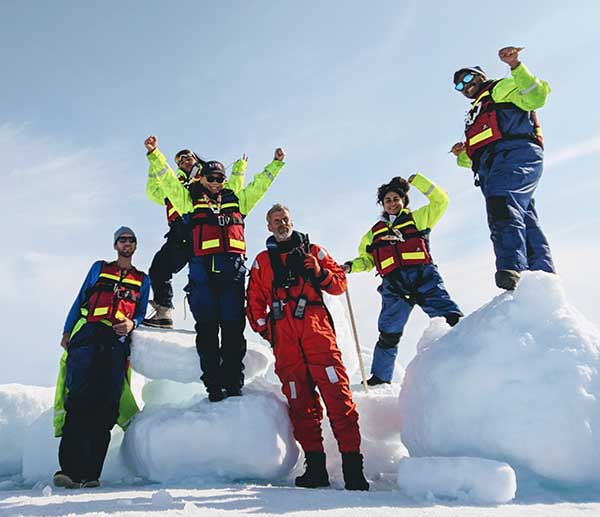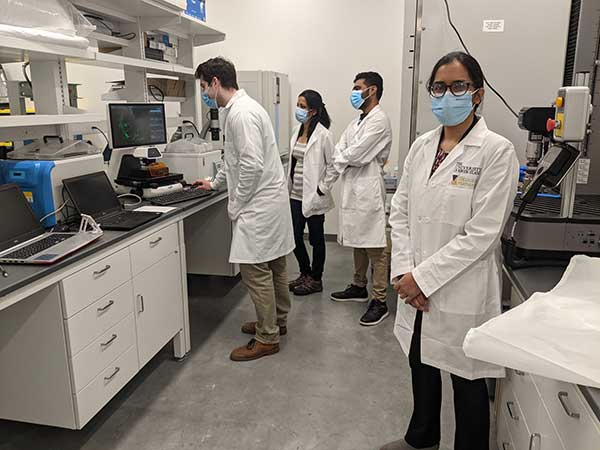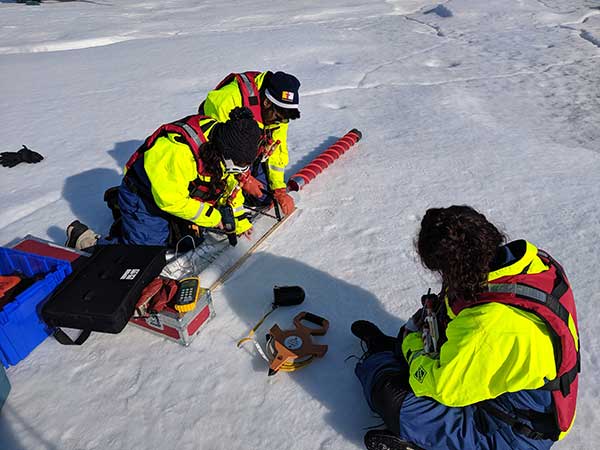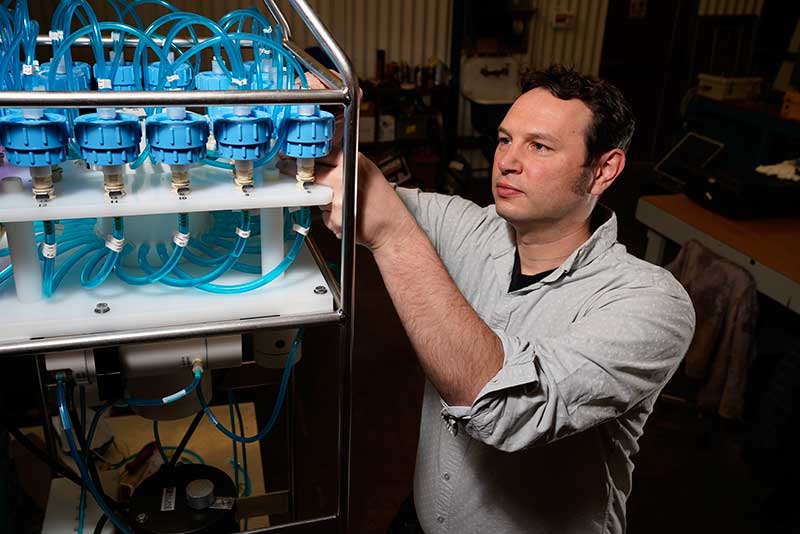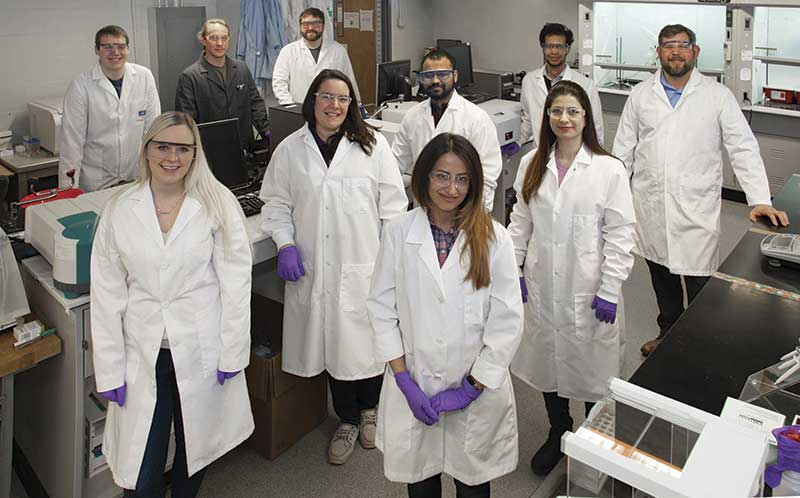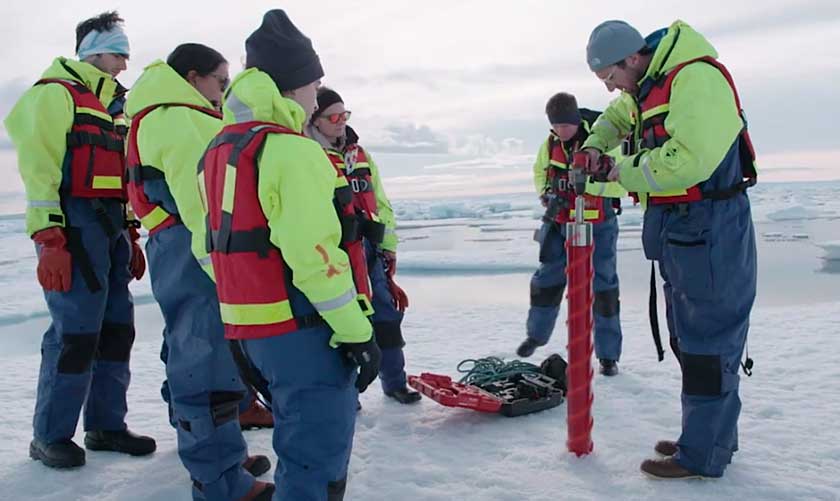Research Areas: Behaviors
Micro- and nanoplastics are ubiquitous, traveling on clothes and food into washing machines, sinks, and wastewater, and with rains, winds and waves into farmlands, down rivers and streams, along sandy beaches and into seabeds. In each environment, the variety of micro- and nanoplastics materials behave differently. Some observable behaviors from research include: absorption of other pollutants including heavy metals; attaching to and collecting on animals and plants; traveling on land, sea and in cells, individuals and populations; floating and accumulating on surfaces; and, transforming and degrading with different conditions and light exposure. URI researchers across the state and around the world are observing, collecting and analyzing these behaviors to understand the impact and contribute to global strategies to inform decisions about plastics.
Projects
The potential geographic pathway and mechanism of microplastic transport into the Canadian Arctic Archipelago (CAA) is uncertain. Research suggests that the dominant water flow of the CAA is from West to East where water of Pacific origin meets waters of Atlantic origin in Lancaster Sound. Arctic Ocean sediments and sea ice are resulted to be sink for the world’s microplastic pollution. It is critical to understand by what physical ocean pathways and processes microplastics are...
Read MoreDue to their ubiquitous nature, micro- and nano-plastics are being increasingly taken up by humans especially through occupational exposure, inhalation and ingestion. Microplastics have been found to accumulate and persist within human tissues upon ingestion. There is an urgent need to predictively study the fate as well as short-term and long-term effects of these contaminants following uptake by cells. The Menon lab is developing novel tissue engineering-based approaches that are more representative of in vivo...
Read MoreAcross the globe, scientists are trying to characterize microplastics and the potential impacts it may have on both ecosystem and human health. Given the prevalence of microplastics, specifically microplastic fibers, in the marine environment, it is critical to understand the potential health risks they pose to oysters and the coastal communities, sustainable fisheries, and aquaculture they support within Rhode Island. What is the impact on environmental, human, and economic health relative to this one species?...
Read MoreExposure to micro- and nanoplastics by inhalation can lead to inflammation, lung damage, and can possibly also contribute to the risk of lung cancer. Menon’s lab would be interested in studying the effects of inhaled nanoplastics and plastic microfibers on cells in the lungs and developing ways to mitigate these effects through localized treatment using biocompatible and biodegradable formulations. Additional Information: Nanotherapeutics & Biomaterials Engineering Laboratory (Menon Lab)
Read MoreThe Northwest Passage Project is a census of microplastics composition from sea ice in the Northwest Passage. Plastic research is fledgling in many ocean regions, including the Arctic. Sea ice is a concentrator of nutrients and a substrate for ecosystem activity, but it can also accumulate contaminants, including plastic s. A research team, led by the URI Graduate School of Oceanography, studied the accumulation of microplastics during an interdisciplinary ocean-based research program (Northwest Passage Project)...
Read MorePlastic pollution in freshwater systems remains significantly understudied compared to the marine environment, yet recent studies suggest high prevalence and concentrations in even isolated freshwater environments. The URI research team hopes to build systematic baseline assessment of the levels of plastic debris within nine of the major freshwater resources in Rhode Island, including a focused study within the Blackstone River. Undertaking baseline assessments are a vital first step in better understanding and ultimately managing emerging...
Read MoreThis research team couples hydrodynamic models (computer simulations of water movement), the use of Lagrangian Drifters (trackable floats that move with the currents), spatial and time-series sampling at strategic locations within Narragansett Bay to develop a baseline understanding of microplastic pollution. This study will 1) determine the current level of microplastic pollution in Narragansett Bay by producing spatially explicit risk maps that highlight hotspots of microplastic contamination; 2) develop model and technological case studies that...
Read MoreA critical natural component of oceans and a point of initial exposure to plastic pollution are sea surface microlayers, which are ubiquitous globally and are comprised of natural molecules, particulate matter, and microorganisms. These microlayers act as an “ocean skin” that influences the exchange of mass and heat between the seawater and the atmosphere. They are also a site of micro- and nanoplastic accumulation. This project will study how micro- and nanoplastics interact with model...
Read MoreThe Bose laboratory at the University of Rhode Island and the Tripathi laboratory at Brown University have been collaborating over the past two years to enhance understanding of the physicochemical and biological interaction of micro- and nanoplastic materials with cyanobacteria. This collaboration has led to two recent publications. Additional Information: Bose Laboratory Tripathi Laboratory
Read More
